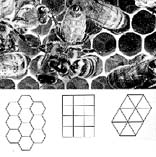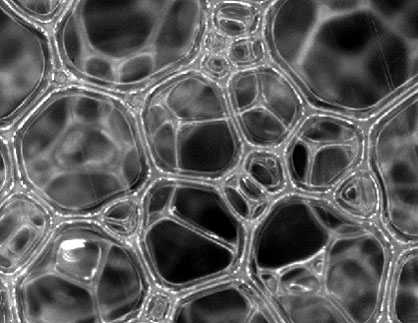|
|
| home > files |
| AA_Inter3
> interACTIVE_fluidSpace Manuela Gatto |
| All'apertura
dell'anno accademico 2003-2004 l'Architectural Association di Londra
traccia il fronte di ricerca per l'anno corrente. L'agenda programmatica
dei vari corsi, dalla Foundation School ai master di specializzazione,
raccoglie i frutti di un anno di studio. Paolo Cascone introduce i diversi
itinerari di sperimentazione della scuola. Tra i temi ricorrenti:
Iperarticolazione ed Emergenza
di Filippo Innocenti; Form finding
di Marco Vanucci. Per approfondire la metodologia didattica, Manuela
Gatto, corresponsabile del corso di Intermediate Unit 3, descrive il
programma del nuovo anno accademico: 'Inter-active Fluid Space'. Chiude
il servizio un'intervista di Alessandra Belia a Patrik
Schumacher, condirettore del Master in Design Research DRL, sul
ruolo della scuola nell'avanguardia dell'architettura contemporanea
e sugli orizzonti aperti dall'applicazione della robotica alla progettazione
dell'architettura "responsive". [Filippo Innocenti, SPIN+] |
||||
| [in italiano] | Intermediate
Unit 3 is offered by the Architectural Association in London as one
of the design-oriented courses in its Undergraduate Section. It is available
to second and third year undergraduate students. Inter 3 focuses on creating "responsive architecture", or environmental artefacts that are able to record patterns of user activity, process them as specific input and eventually calibrate and adjust their own performance accordingly. The processing side of a responsive environment is merely hardware/software based (sensors/computer/software platform), but the user interface is purely spatial and architectural, ranging in scale from furniture to the building as a whole, and ultimately its urban context. The "disappearance" of technology due to the miniaturization of hardware and wireless technology generates a schism between technology and architecture, in which the latter is no longer constrained and shaped by its technical components. In this sense, taking into consideration the fast development of the digital side of responsive environments (for instance the research into the nano-technology field), the user interface becomes an urgent architectural issue. Responsiveness varies according to the user's expectations and characteristics. Therefore, the complexity of the response increases with the number of the users. The linear interaction of a responsive environment with a single user is adequate in domestic settings but fails in public places. Crowd interaction implies a higher level of complexity, in which the system has to negotiate with multiple and contradictory inputs. Over the last three years, Inter 3's investigations began by considering the one to one response that occurs in a domestic space, and led into the complex interactions between architecture and multiple users in retail settings. At the present moment the Unit is researching a different level of interactive architecture, one that involves not only unstable swarms of users but also unforeseen factors in the natural environment; a kind of sensitive architecture that is constantly able to adapt to and in turn influence its unstable surroundings. |
[10feb2004] | ||

|
Sensitive
environments display altering natural or artificial environmental conditions
through the medium of architecture. Architecture can interact with the
urban environment in a static manner, merely through its own specific
geometrical or material arrangement, or in a dynamic way, by means of
its kinetic response. When responsiveness is calibrated to react to global urban stimuli, rather than to single or multiple human triggers, the reaction can reduce or enhance the nature of the original source, reminiscent of biological positive or negative feedback. For example, Blur Building by Diller and Scofidio responds to the surrounding environment (Neuchatel Lake) by vaporising its water and emphasising the global humidity level. In general terms, environmental triggers can include general noise levels, wind and sun exposure and refraction, tidal variations, rain and mist, various types of waves conveyed through the soil (e.g. train and subway oscillations), air and water pollution levels, spoken forms of public information (from elevators, cars, public transport means, supermarket checkouts...) and can vary in time over a yearly/ monthly/ daily /hourly basis.  This architecture can cross-reference, enhance and alter data registered in the urban environment by means of software-based re-elaboration, or hybridise it with new totally artificial inputs. Augmented environments, such as sonic landscapes, are hot research fields for major software companies. Cutting edge laboratories at Sony, such as Computer Science Laboratory in Paris are working to implement intelligent musical systems and propose new modes of access to music and interaction with sound, in order to develop more adaptive listening environments for the future. Microsoft is launching Windows Media 9, a $500 million attempt to build a platform for digital media in the same way that Windows is a platform for productivity tools. This year, Inter 3 has chosen water as an environmental medium for exploring architectural responsiveness. The investigation of water and its material qualities is a specific tool for initiating our research into flows and emergent patterns. This will be the key to our design incursions into the field of environmental responsiveness.  Our first research step looks into the various fluid configurations of water under the influence of physical forces, such as ripples, vortexes, currents, jets and whirlpools. These water formations are investigated as emergent pattern organisations (1), just as a vortex materializes as an entity from the collective behaviour of single water particles. We have named this phase the wet model. |
|||
A wet model is a physical model that simulates and re-interprets
the material and dynamic properties of the observed fluid behaviour.
It provides the basis for a diagrammatic exercise that involves multiple
means (drawing, digital animation, photography, video). At a later stage,
a wet model evolves into a dry model (no moisture allowed!).
The dry model is an attempt to translate the amount of information
and knowledge about water behaviour gathered in the earlier phases into
a radically different (dry) material configuration (through physical
and digital models). A generally renowned example for possible wet to dry model evolution is soap bubble clustering. A soap bubble is a minimum energy system in that it displays the minimum external surface for its amount of internal volume. When clustering together, bubbles organise themselves negotiating their relative position following the law of closest packing, a structural arrangement of inherent geometric stability. They equalise the distance of their centres and connect their faces with constant angles –120°, 109° 28'– in order to satisfy conditions of minimum potential energy. Therefore, soap film represents a perfect tool for geometrical optimisation that can be implemented as an architectural tectonic diagram. This series of experiments build up the design knowledge that will later be spatially translated into the project for an artificial island on the river Thames, a self-contained object that responds and reacts to multiple users (from locals to the crowds populating the river on a weekend day) and to erratic environmental conditions such as London's typically variable weather. Manuela Gatto m@ramtv.org |
1.
"Self-organisation is a process in which pattern at a global level of
a system emerges solely from numerous interactions among the lower-level
components of the system. Moreover, the rules specifying interactions
among the system components are executed using only local information,
without reference to the global pattern". Scott-Camazine et al, Self-Organisation
in Biological Systems, Princeton University Press, Princeton 2001. |
|||
|
>
AASCHOOL |
||||